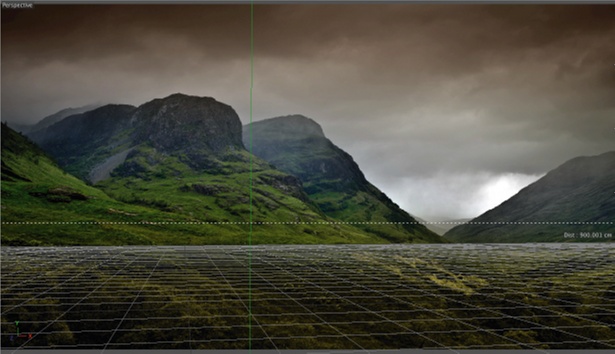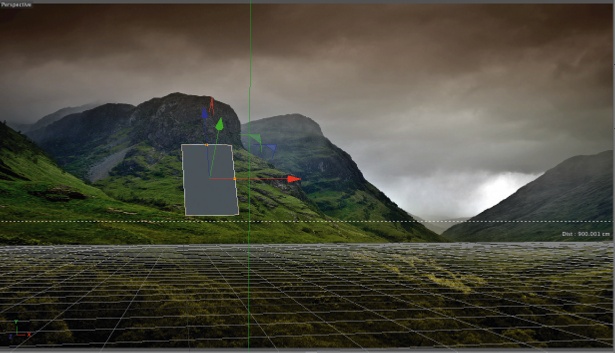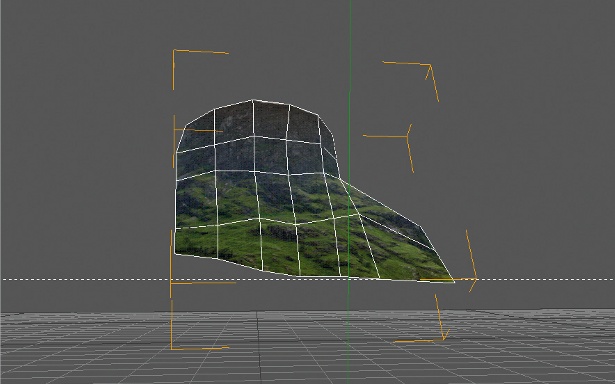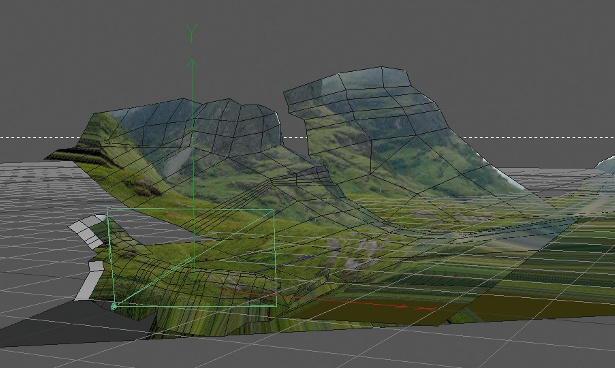Simon Foster on why design is like hairdressing
The leading independent designer chats to Martin Cooper about the need for simplicity and how to stamp out plagiarism through the power of Comic Sans
This article first appeared in issue 237 of .net magazine – the world's best-selling magazine for web designers and developers.
.net: You used to be a hairdresser. How did you get started in web design?
SF: I quit hairdressing in 2006 due to a combination of illness and the fact that I had started to hate the job anyway.
I bummed around for a while, DJ-ing around London and selling my old records online to pay the rent, but not really going anywhere. Then a close friend of mine passed away in 2007, and although it was tragic, it made me realise that life is short and that I needed to find some direction.
I’d been playing around designing flyers for the club nights I was doing; and a friend had taken some basic web design courses at the Open University and found a job straight afterwards, so I thought it would be worth giving it a go.
.net: So you’re self-taught?
SF: I’m mostly self-taught, although the OU courses I took gave me a very basic understanding of HTML and CSS. As soon as I’d finished those courses, I did two different internships with startups in London, which taught me what not to do as much as anything. I think I learnt a great deal more from just throwing myself head first into work and picking up things as I went. One thing that struck me immediately was how willing the web design and development community is to share knowledge, tips and code – which is great for beginners.

.net: Are there similarities between hairdressing and web design?
SF: Yes, which surprised me as much as anyone. I think having already had a relatively successful career in a different creative industry was really good preparation for becoming a web designer. Hairdressing (at its highest level, not the high street blow-dry-and-highlight brigade) is all about an appreciation of form, function, shape, texture, colour and balance. A good hairdresser understands the need to balance aesthetics with functionality and how good technique can make a haircut keep its shape longer. This is no different to the way in which a good web designer understands how form must follow function, and that clean, well-written code will make a website more robust in the future.
Hairdressing also gave me great people skills, as I used to deal with eight or more different clients a day and really learnt the value of consultation. If you consult properly before you start a haircut – or indeed a website – you eliminate a lot of the small problems that can appear later on.
.net: You work mainly for yourself. Are you ever tempted by the bustle of a big agency?
SF: Yeah, I work mostly by myself. On some projects, I’ll be part of a team, but I always work from home. Plenty of agencies have asked if I want to join them, but I guess I like the freedom I have in being my own boss. I don’t have to conform to any time schedule, I don’t have the ‘hovering art director’ problem to deal with, and it’s just a really nice stress-free way to live. I’ve come to realise that my quality of life is more important than my job, and working for myself allows me to have the life I want.

.net: Let’s talk tech trends. What’s your take on prototyping in the browser?
SF: To me, it just feels better to work in-browser. Photoshop feels out of context, especially now with websites being responsive.
But I don’t think there’s necessarily a right or wrong way to do anything: it’s all about what suits you as a designer, and the nature of the project you’re working on. Some people find it better to comp websites up in Photoshop or Illustrator; others, like myself, prefer to do most of the work in the browser. But as long as you get there in the end, it doesn’t really matter. I actually learnt how to write HTML and CSS before I learnt how to use Photoshop, so I guess that could be a contributing factor.
.net: What about responsive design? Is it as significant as it’s made out to be?
SF: There are those who mistakenly describe RWD as a fad – and yes, our industry is overloaded with annoying buzzwords – but, no, it’s not just a fad: it’s our industry adapting to ever-changing circumstances.
I think that as more designers take mobile into consideration, we’ll see fewer gimmicks. A lot of clients mistakenly think that a gimmick will make their websites more interesting, but I think it has the opposite effect: to me, it says, “Our products aren’t that interesting, so here’s a bunch of stuff moving about to distract you.” It’s up to us as designers to educate potential clients into having more confidence in the content their site is promoting.

.net: So should designers think more about simplicity? Should they train themselves to cut back at the end of a project, like writers?
SF: That’s a very good analogy, comparing designers to writers. I’ve come to realise that my job is more about what I don’t add – or what I take away – than what I do. Because of the limited space available at smaller screen sizes, RWD makes you focus more intently on the site’s content and how easy it is for the user to access it.
Though simplicity is not itself an aesthetic, you can still have a visually pleasing or illustrative design, as long as there is no superfluous design noise that gets in the way of the site’s function.
.net: How do you think today’s responsive sites will be remembered? Are we in the golden age of web design, or the Jurassic age?
SF: I think we’ve been in a golden age of web design for a couple of years now, regardless of RWD – especially when you compare today’s sites to the bloated, Flash-based, torn-paper-grunge rubbish that was around a few years ago!
How responsive sites will stand the test of time remains to be seen, but I imagine it’s like any other form of design: that which is done well will age well, and that which merely conforms to the fads of the day will quickly date.
In the future the number of people who consume our work on mobiles or tablets will only increase, so it’s up to us to make our sites as device-independent as possible. The best design is the one you don’t notice, no matter how you view the work.

.net: At what point in a project should a designer be brought on board?
SF: Right at the beginning. A lot of clients make the mistake of thinking of designers as merely decorators that ‘pretty up’ your site once it’s all been wireframed and prototyped. This trivialises the designer’s role: rather than just being responsible for cosmetic tasks, designers’ knowledge, insight, instinct and experience can be invaluable in shaping practical considerations like navigation, content hierarchy and IA.
.net: As well as your design work, you run Free Faces, an online repository of free fonts. Who are your influences from the world of typography?
SF: That’s a really hard one to answer, because the world of typography is divided into those who design typefaces and then those who experiment with them online.
I really like the work that Tyler Finck, Gerren Lamson and the Colophon foundry are doing right now, and also the experimental web font stuff done by Trent Walton. Elliot Jay Stocks also did a really interesting set of blog posts entitled ‘Tomorrow’s web type today’ earlier in the year, which focused on some future-facing OpenType features in web typography.
Daily design news, reviews, how-tos and more, as picked by the editors.

.net: You’ve blogged about other designers ripping off your work. How do you deal with the problem?
SF: It happens so often now that I don’t worry about it any longer. It is annoying, but I can’t spend all day emailing the felons and then naming and shaming on Twitter: I’d never get any work done.
I did recently find one culprit who had hotlinked to my site’s style sheet, though. I made a few changes so that her site was covered in pictures of cats and text was set in baby pink Comic Sans!
The nerve of some people does amaze me. One guy asked if I could make some recommendations to improve his site after he had ripped off the design and code entirely from me!
.net: You’ve also blogged about parrots living wild in London parks. Is it true? And is Jimi Hendrix really to blame?
SR: Yep, there are hundreds of bright green parrots living wild in London. I have this romantic image in my head of Jimi Hendrix letting loose a giant flock of the things during an acid-fuelled animal love-in, but sadly that’s not the case.
The truth is far more mundane: they probably escaped, or were released, from aviaries, pet shops and private homes.
A few months back, I was walking through the park opposite my flat, looked up into the tree above me, and saw about a hundred parrots staring down at me against the swirling grey early evening sky. I felt like I was in a Hammer horror movie!

Discover 10 hot trends in website design at our sister site, Creative Bloq.

The Creative Bloq team is made up of a group of art and design enthusiasts, and has changed and evolved since Creative Bloq began back in 2012. The current website team consists of eight full-time members of staff: Editor Georgia Coggan, Deputy Editor Rosie Hilder, Ecommerce Editor Beren Neale, Senior News Editor Daniel Piper, Editor, Digital Art and 3D Ian Dean, Tech Reviews Editor Erlingur Einarsson, Ecommerce Writer Beth Nicholls and Staff Writer Natalie Fear, as well as a roster of freelancers from around the world. The ImagineFX magazine team also pitch in, ensuring that content from leading digital art publication ImagineFX is represented on Creative Bloq.
